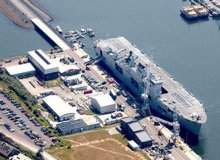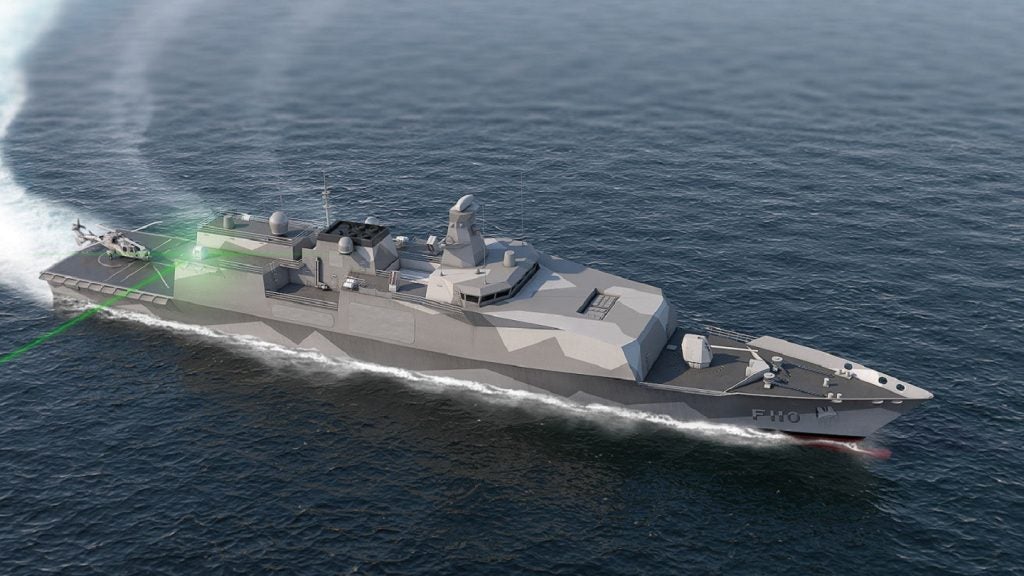

UK MoD awards £3.2bn contracts to support British naval bases
The UK Ministry of Defence (MoD) awarded contracts worth £3.2bn to support the management of British naval bases and the maintenance and overhaul of the Royal Navy’s fleet of 56 warships and submarines.
UK Defence Secretary Michael Fallon said: "This huge investment in our naval bases will directly sustain more than 7,500 jobs and skills across the UK, and ensure that the Royal Navy’s fleet of 56 warships and submarines are in the best possible condition and available for operations."
Babcock, which oversees naval bases at Devonport and Clyde, secured a major share by winning a contract worth £2.6bn, while BAE Systems, which manages Portsmouth Naval Base, signed a £600m contract.
UK-led Joint Warrior 2014 exercise begins

The UK-led Joint Warrior 2014, Nato’s biggest military exercise, started off the coast of Scotland.
Maritime forces from a host of Nato nations, including 22 ships and submarines and 52 fixed-wing aircraft, are taking part in the exercise, which aims to enhance combat skills.
How well do you really know your competitors?
Access the most comprehensive Company Profiles on the market, powered by GlobalData. Save hours of research. Gain competitive edge.

Thank you!
Your download email will arrive shortly
Not ready to buy yet? Download a free sample
We are confident about the unique quality of our Company Profiles. However, we want you to make the most beneficial decision for your business, so we offer a free sample that you can download by submitting the below form
By GlobalDataIt will involve air, surface and underwater threat training, starting with military and political tension, in addition to simulated war fighting.
Participating nations include the UK, the US, the Netherlands, France, Denmark, Norway, Spain, Germany, Lithuania, Belgium, Poland, Estonia, and Latvia.
US Navy receives first maritime signals intelligence system from Boeing
The US Navy took delivery of the first ship’s signal exploitation equipment increment F (SSEE-F) system, a maritime signals intelligence system developed by Boeing.
The delivery programme is ahead of schedule and the navy will receive time for additional testing.
Built by Boeing subsidiary Argon, the tactical cryptologic SSEE-F system facilitates the operation of all required signal processing operations to acquire, detect, locate and evaluate signals for external and internal data.
BAE delivers Australian Navy’s first LHD vessel
BAE Systems delivered the first of two landing helicopter dock (LHD) vessels, Nuship Canberra, to the Royal Australian Navy (RAN), paving the way for its planned commissioning next month.
The delivery follows the successful completion of sea trials in Port Phillip Bay and off the southern coast of New South Wales, Australia, which involved an assessment of the vessel’s combat and communication systems, as well as some platform system trials.
Prior to the vessel’s commissioning in Sydney, navy personnel will continue to move aboard Canberra and carry out training and other preparations.
UK Navy’s Astute-class Artful submarine completes maiden dive
The UK Royal Navy’s third Astute-class submarine, Artful, completed its maiden dive at the BAE Systems dock in Barrow-in-Furness, paving the way for sea trials next year.
As part of the ‘trim and incline test’, the vessel was immersed to a depth of 15m to measure its precise weight and centre of gravity. The dive helps to determine its safety and stability when deployed in water.
The maiden dive also involved an assessment of the submarine’s sonar, navigation and optical systems.
UK Royal Navy to support US forces in fight against IS

The UK Royal Navy deployed its Type 45 Daring-class anti-air warfare destroyer, HMS Defender, to join the US Navy carrier task group in the Gulf and support the international coalition fighting against Islamic State (IS).
As part of the deployment, Defender’s air defence radar and Sea Viper missile system will protect USS George H W Bush, the US Navy’s aircraft carrier, and its escort vessels while they patrol the Gulf and launch air strikes against IS.
The vessel will also generate a precision air surveillance representation over the Gulf, in a bid to protect the US aircraft carrier from potential air attack.
US Navy’s second Triton UAS completes maiden flight

The US Navy’s second MQ-4C Triton unmanned aircraft system (UAS) successfully completed its maiden flight at Northrop Grumman’s Palmdale facility in California, US, ahead of its flight to a navy facility in Maryland later this month.
As part of the programme, a flight test team from Northrop, together with the navy, executed the MQ-4C’s 6.7-hour flight.
In a bid to make the UAS capable of conducting a safe ferry flight, it will undergo a range of ground checks and inspections.
Triton can fly at altitudes for more than 10 miles, covering a million square nautical miles of ocean.
French DGA successfully completes final qualification firing of MdCN missile
The French Direction Générale d’Armement (DGA) successfully completed the final qualification firing of the Missile de Croisière Naval (MdCN) system, also called the naval cruise missile (NCM), at the DGA Missile Test Centre in Biscarrosse, France.
The launch, which was executed from a frigate, was mainly aimed at determining the missile’s range performance, while satisfying overall flight objectives.
Built by MBDA as part of the DGA contract in 2006, the MdCN missile system will be installed on the French Navy’s Frégate Européen multimission (FREMM) vessels and its Barracuda nuclear-powered attack submarines by 2015 and 2018, respectively.
USS Chancellorsville test-fires two Raytheon SM-6 interceptors

The US Navy’s Ticonderoga-class guided-missile cruiser, USS Chancellorsville (CG 62), successfully test-fired two Raytheon Standard Missile-6 (SM-6) interceptors against anti-ship and cruise-missile targets in the Pacific.
As part of the navy’s combat ship qualification trials, the first SM-6 hit the low-altitude, short-range supersonic target (GQM-163A), while the second captured a low-altitude, medium-range subsonic target (BQM-74E).
Raytheon Standard Missile-6 senior programme director Mike Campisi said: "Advanced warning and cueing from another sensor or ship allows the US Navy to take full advantage of SM-6’s over-the-horizon capability.
"Now the warfighter does not have to wait until the threat is knocking at the door to take it out. Targets are destroyed much sooner and one ship can defend a much larger area."
Talon laser-guided rocket completes second test-firing
Raytheon and L-3 test-fired the Talon remote-rocket weapon system (Talon RRWS) on an L-3 advanced remote weapon station, using an LAU-68 launcher.
During the test, which is the second successful launch after a proof-of-principal test in January, the Talon laser-guided rocket was illuminated by a laser designator on the weapon system and successfully hit the target.
Raytheon Naval and Area Mission Defense product line vice-president Rick Nelson said: "This system represents an affordable and effective solution to the increasing demand for small-ship protection from swarming surface threats.
"Raytheon’s Talon, combined with L-3’s sensors and advanced remote weapon station, provides digital, semi-active laser accuracy that is available today."







